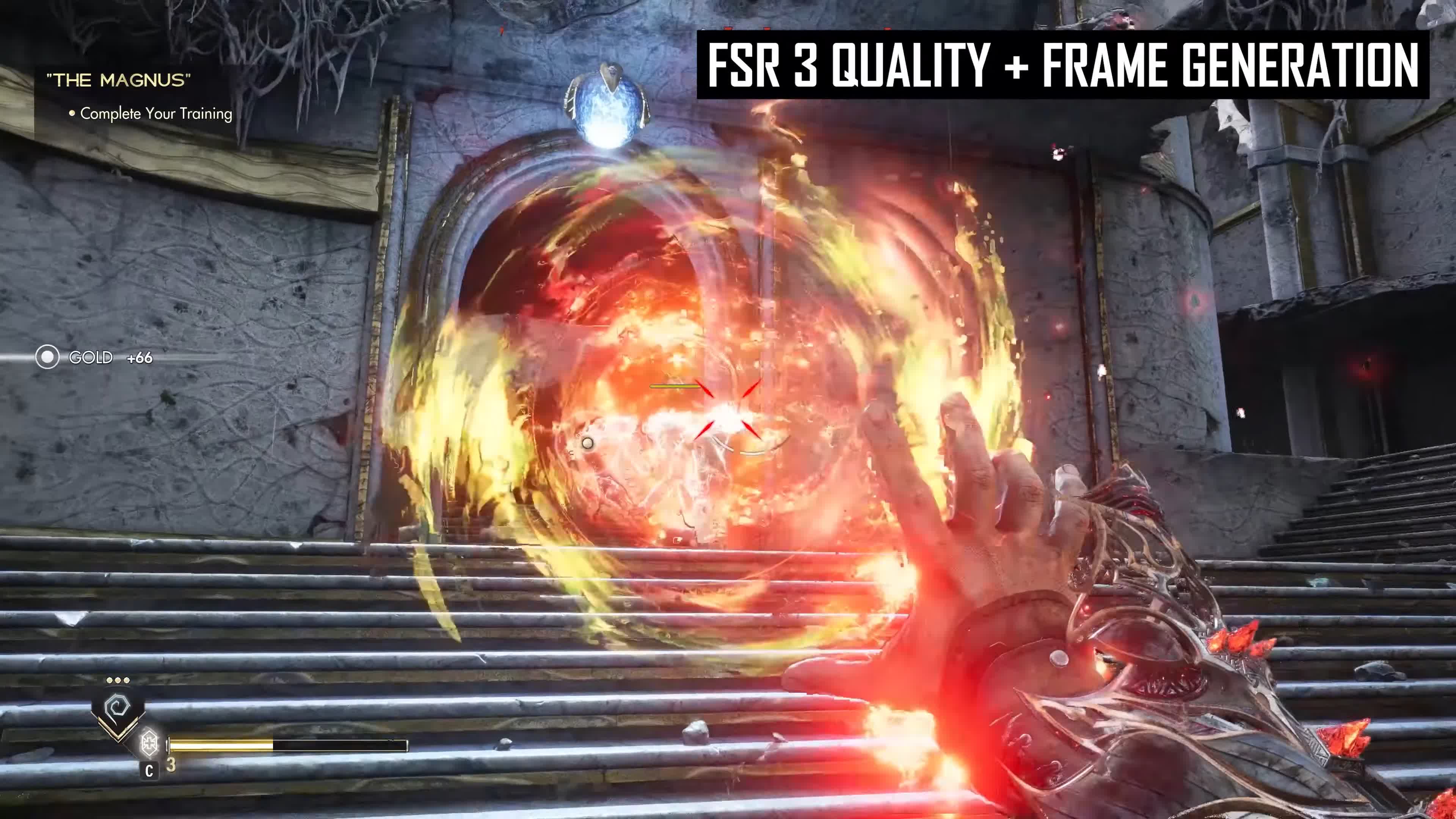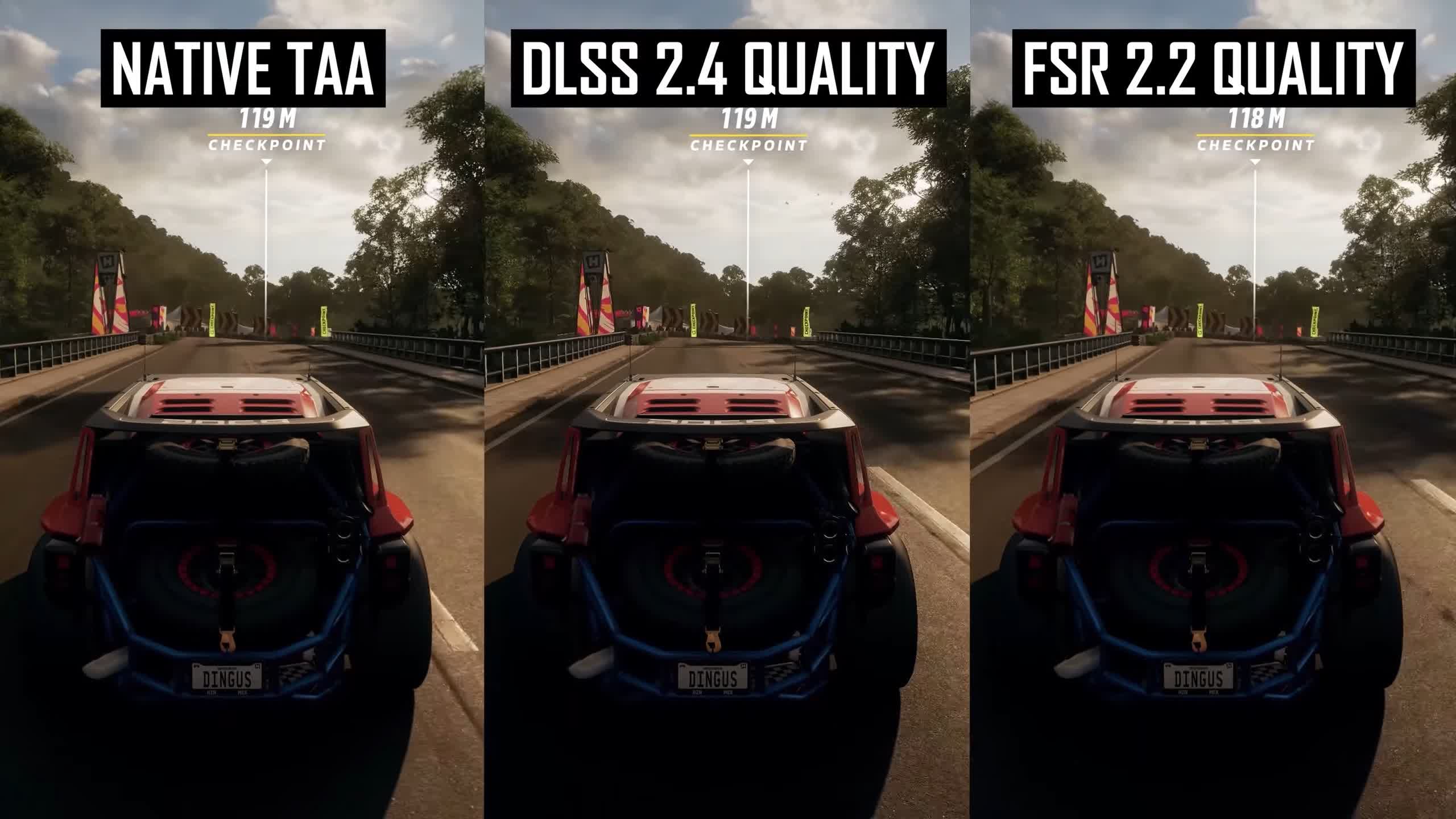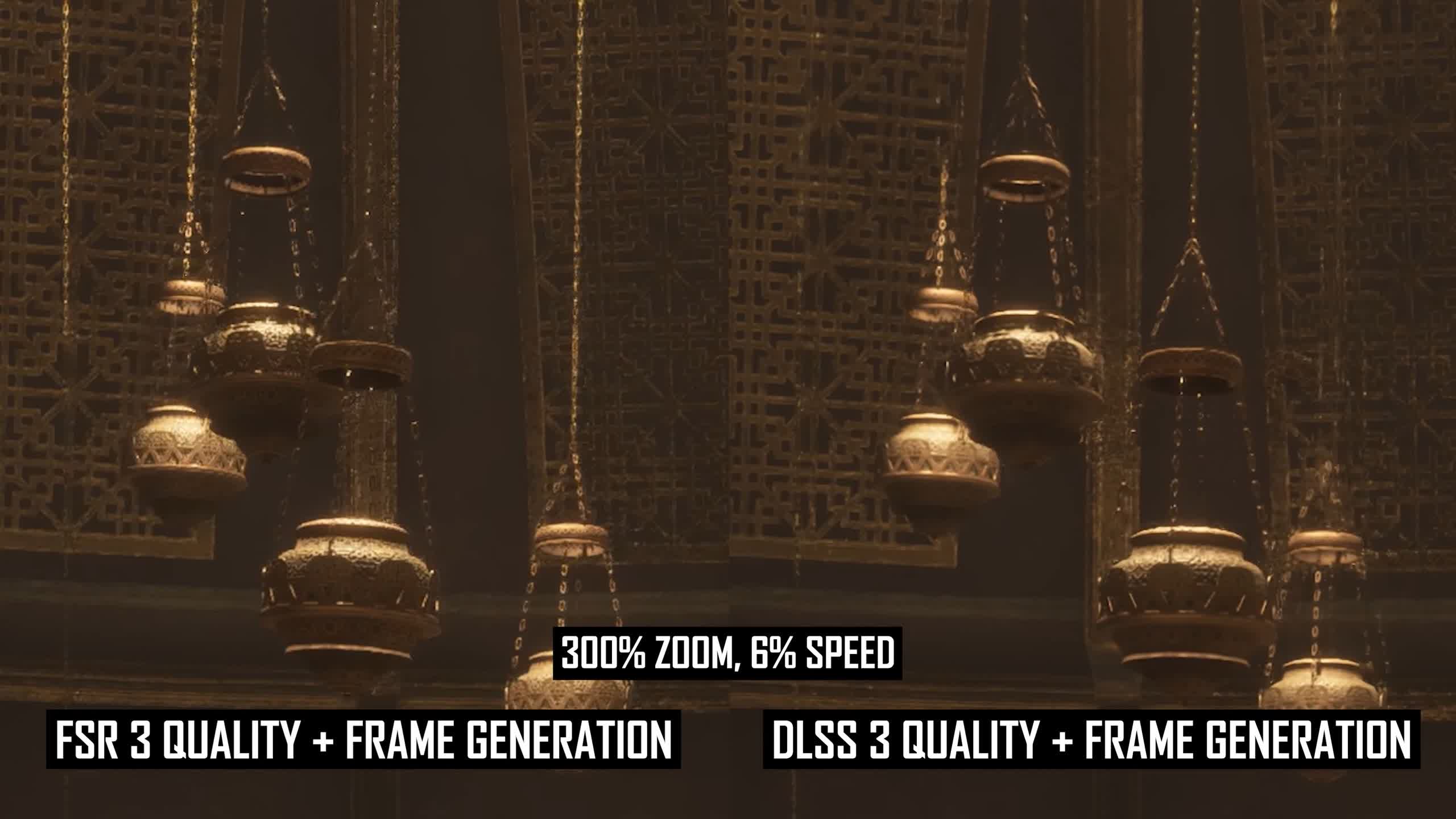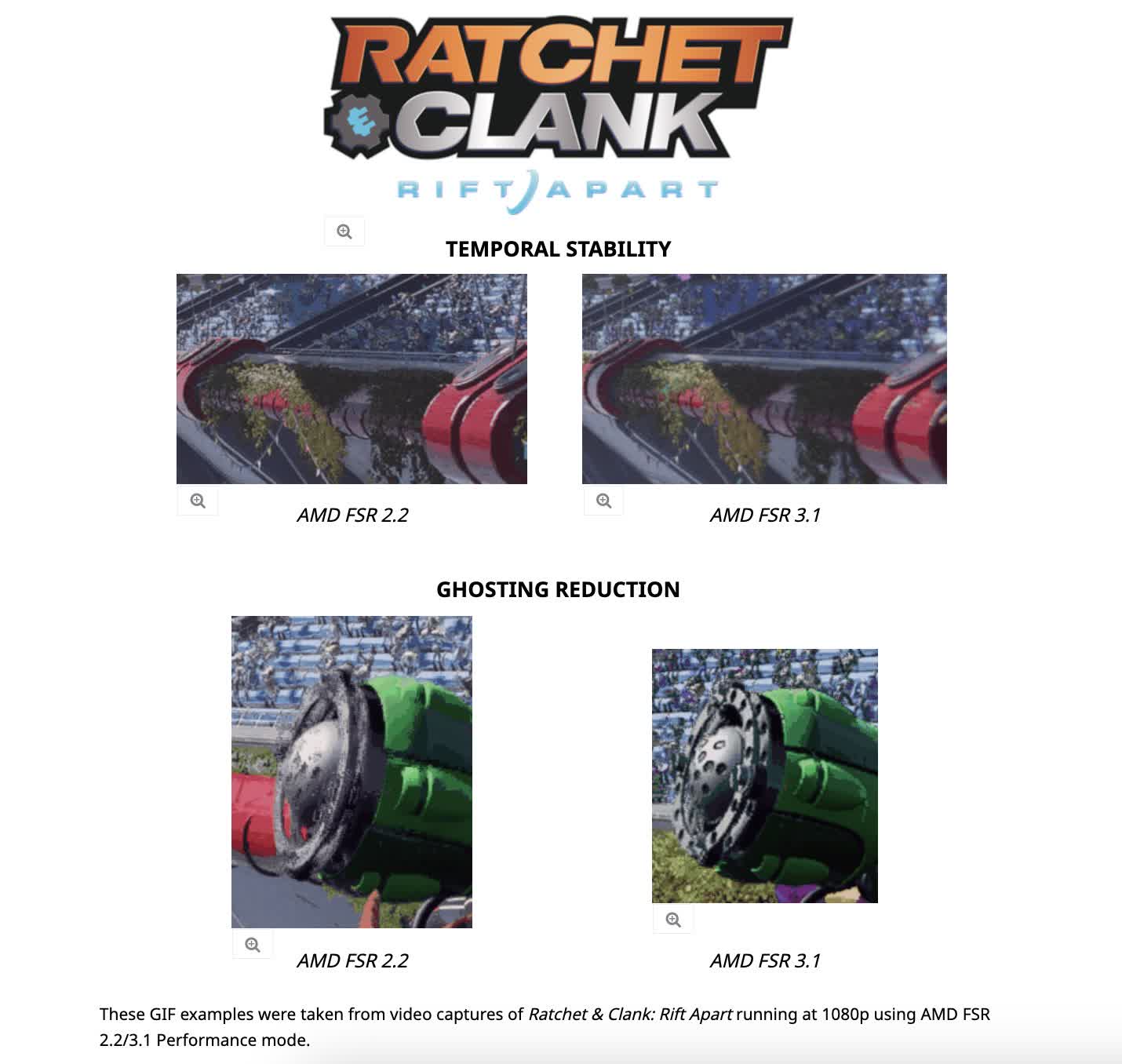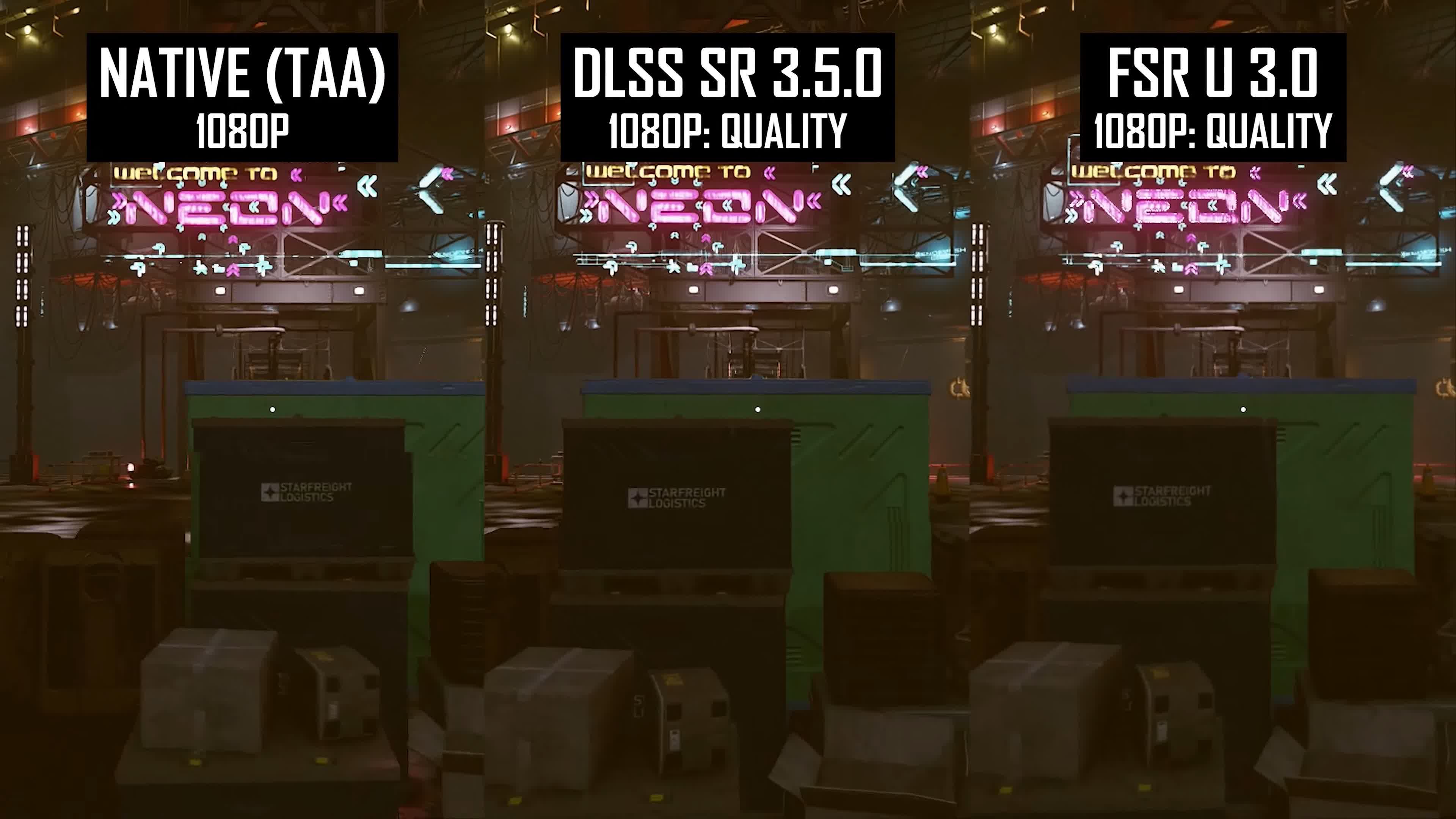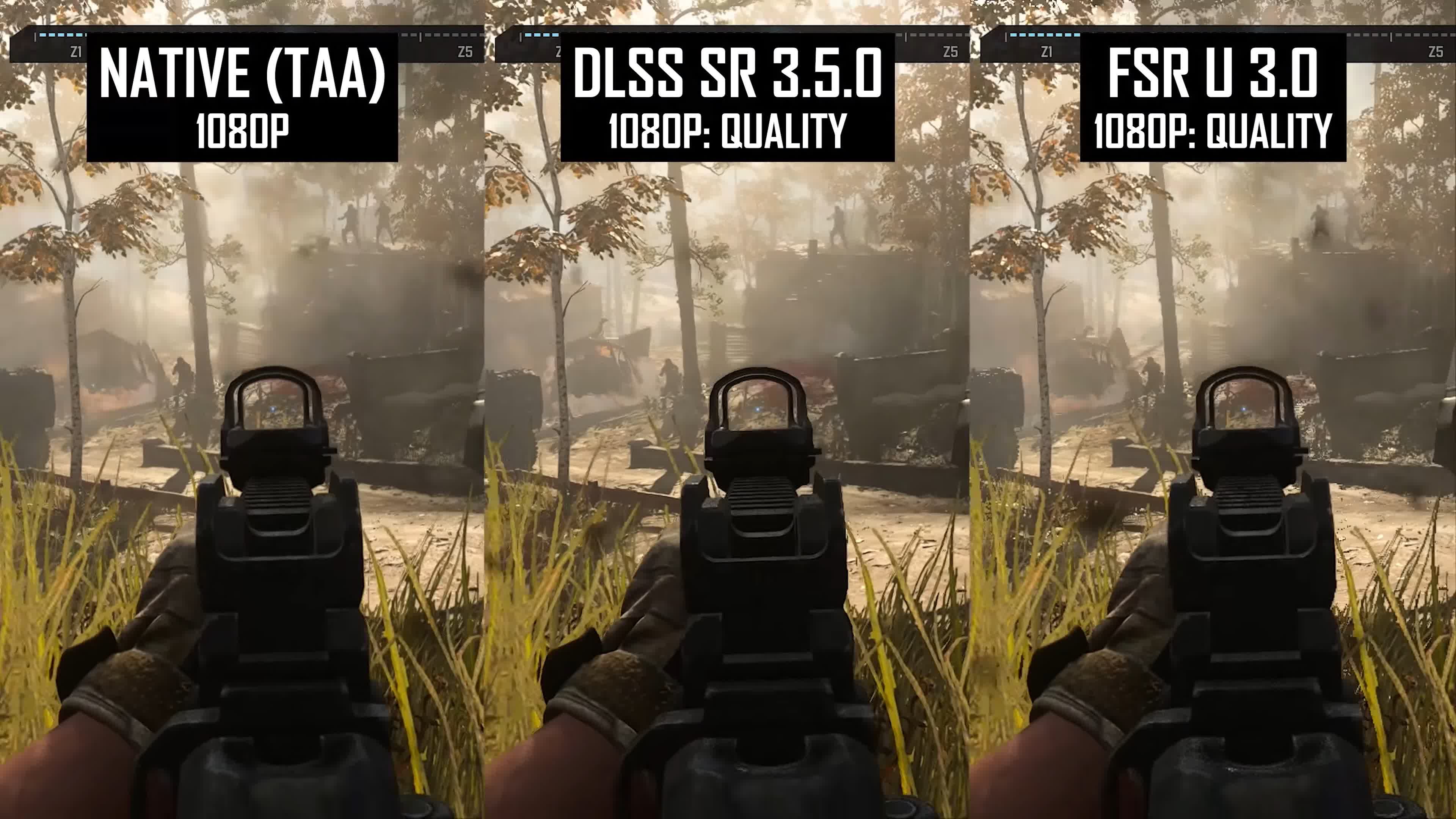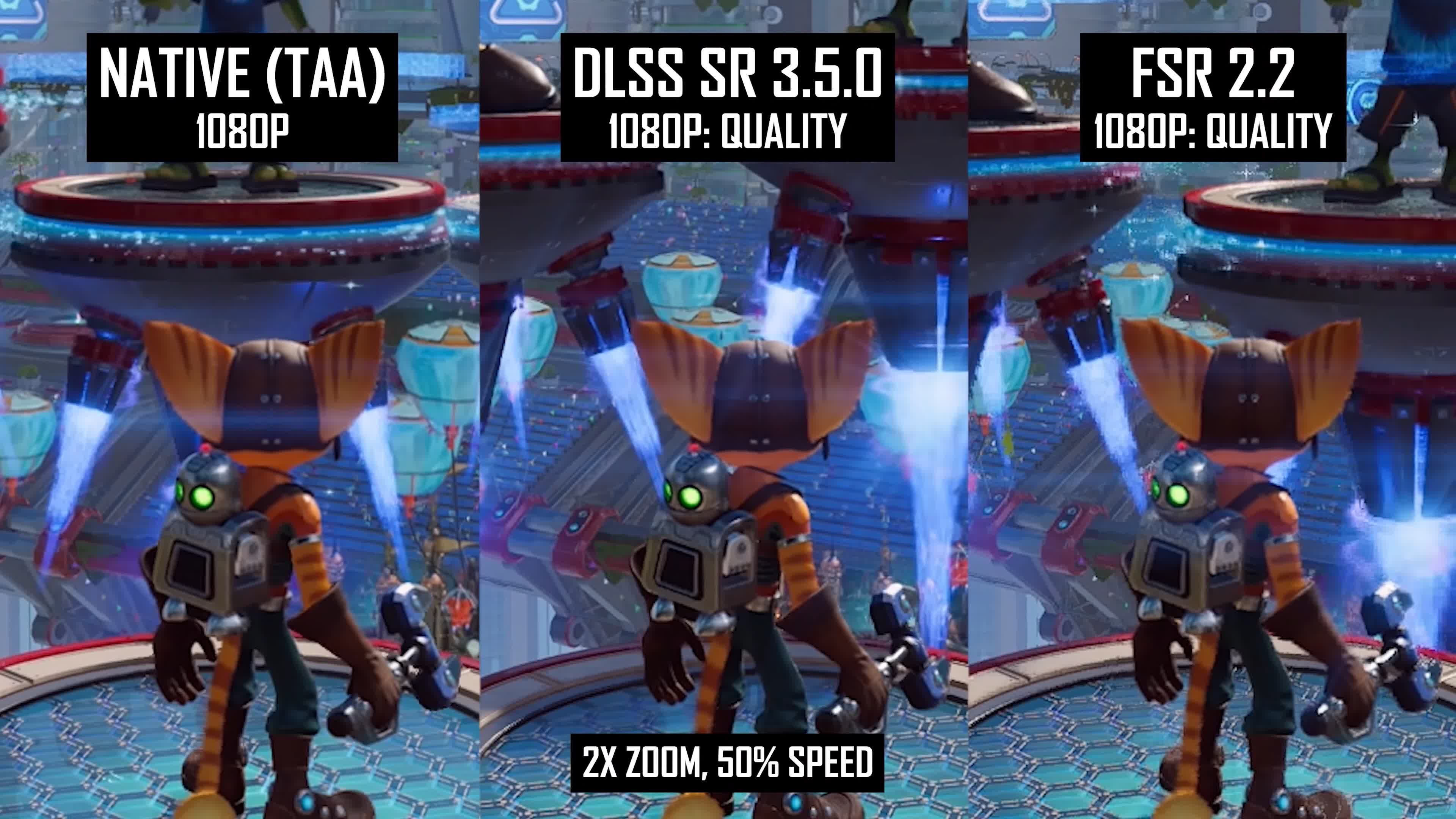What just happened? This week at the Game Developers Conference, AMD has finally announced an update to their FSR upscaling technology. FSR 3.1 is not a major update, and it's not the rumored AI-based FSR that's been talked about the last few weeks, but it's an update nevertheless.
This is relevant news because AMD had neglected the upscaling component of FSR over the last year or so. Before this update, the last time AMD had added improvements to their upscaler was FSR 2.2, released in November 2022. That's a whopping 15 months ago, a long time to go without updates for a technology that has known issues and is in serious need of improvement.
In this time, AMD released their FSR 3 frame generation tech, though one of our major complaints with FSR 3 was that AMD did not improve the upscaling component, meaning there were still noticeable visual artifacts in many situations. FSR 3.1 looks to be an evolution on that tech, adding improvements to both the upscaling and frame generation sides.
According to the FSR 3.1 changelog, the update includes upscaling quality improvements, or in AMD's words "improved temporary stability at rest and in movement – less flickering and/or shimmering and 'fizziness' around objects in motion" as well as "ghosting reduction and better preservation of detail."
Another feature that will please many gamers, and that's not just AMD Radeon owners but Nvidia GeForce owners as well, is the news that FSR 3.1 will decouple frame generation from upscaling. This will allow FSR 3.1 frame generation to work with other upscaling solutions like DLSS and XeSS, which has the potential to improve image quality using frame generation across games where DLSS and/or XeSS are superior to FSR.
It was always a bit puzzling to me from a technical perspective as to why FSR 3 frame generation forced you to use FSR upscaling, considering that DLSS 3 frame generation has allowed the use of other upscalers since launch. The ability to use FSR frame generation with DLSS is a huge win for Nvidia GPU owners, particularly those with GPUs prior to the RTX 40 series that don't support DLSS frame gen.
I like this addition in particular because the actual frame generation component of FSR 3 is quite good, back in my initial analysis I noted that it's probably not quite as good as DLSS generated frames but good enough in motion. The main image quality differences between AMD and Nvidia's frame gen solutions more often came down to the quality of the upscaling component, rather than how the generated frames looked. DLSS, or even XeSS at times, plus FSR frame generation should look quite decent.
AMD provided some examples of what FSR 3.1 is bringing relative to FSR 2.2, though we should note these are low resolution GIFs rather than a high quality video output. But still enough to gather some information about the improvements being made.
In the example provided we see Ratchet & Clank: Rift Apart, which is one of the worst examples of FSR 2.2 we've seen, it seriously does not work well in this game at all. AMD says that both examples were running at 1080p using the FSR Performance mode, which puts a worst case scenario for FSR on top of a worst case game example.
In the first shot showing temporal stability, the FSR 2.2 side has horrible shimmering and flickering in what appears to be a stationary scene. This is greatly reduced using FSR 3.1, though not completely eliminated. There is still some shimmer in the FSR 3.1 image, though it would have been nice to get a higher resolution example as some areas appear to have artifacts introduced by the GIF encoding rather than FSR itself. In any case, this is a significant image quality improvement in my opinion, particularly considering this is the 1080p Performance mode which let's be honest, has unacceptable image quality with FSR 2.2.
The other example provided relates to ghosting. FSR 3.1 is shown to have much less ghosting and garbling with this element relative to FSR 2.2. This grainy low resolution reconstruction we see on the FSR 2.2 side is a common artefact seen across many games in fast paced motion, where FSR upscaling simply doesn't have enough information for the upscaling process. The FSR 3.1 side looks much cleaner and nicer, though again, hard to tell from this example and it's footage provided by AMD, we aren't able to see how it looks in game just yet.
It's promising to see AMD working to address these issues because they have become pretty consistent complaints about FSR every time I've analyzed its image quality. Going back to the release of FSR 3, I complained about image stability while standing still in some titles like Forspoken, even using the highest quality FSR settings like Native AA at high output resolutions like 4K. Typically this instability gets even worse at lower resolutions and lower quality settings.
Of course, we don't know from what's been shown so far whether FSR 3.1 will have any notable improvements to stability at higher resolutions and quality modes – it could be a case where these examples taken at the worst case 1080p Performance mode amplify the differences, and any differences at 4K using the Quality mode are less pronounced. But I would be expecting at least some sort of improvement that addresses this.
The reason why stability when stationary is so important is that it sets the foundations of opinions on image quality. A typical gamer experimenting with different upscaling settings is largely going to do so while standing still. If they turn on FSR and notice that it's all shimmery and lacks stability, they're probably going to think that technology is pretty crap, especially relative to other solutions that preserve the clean, artifact-free presentation you typically get without upscaling. And usually when there are artifacts when standing still, those are even worse in motion. Image stability isn't poor in all FSR 2.2 games, but undoubtedly this is one of the largest points of difference between FSR and DLSS upscaling in today's games.
Image stability isn't poor in all FSR 2.2 games, but undoubtedly this is one of the largest points of difference between FSR and DLSS upscaling in today's games.
This should also be of significant assistance to those with handhelds like the Steam Deck, which heavily rely on upscaling to deliver acceptable levels of performance and are typically doing so at low render resolutions.
AMD says that FSR 3.1 will be coming to Ratchet & Clank: Rift Apart through a game update "later this year." They also said the technology will be available to developers through GPUOpen in Q2 – hopefully that means the beginning of Q2, which is just a month away. Also, Vulkan and Xbox Game Development Kit (GDK) support sounds promising for gaining more dev support and momentum compared to Nvidia's DLSS which remains proprietary.
What remains to be seen in the near term is how FSR 3.1 handles some of the edge cases around upscaling quality, as well as frame pacing with frame generation. While AMD did deliver some improvements with FSR 3 in Avatar Frontiers of Pandora, there have been more recent reports of frame pacing issues in other titles, like The Last of Us Part I.
Having frame gen and upscaling decoupled in FSR 3.1 is good, but only if the frame generation side actually paces frames well to your display and doesn't introduce noticeable judder.
Whether the announcement of FSR 3.1 means that AMD is not working on an AI upscaler like has been rumored, or whether that upscaler is going to be a long way in the future, we honestly don't know, but we wouldn't read into it too much.
FSR 3 game support, up to 40 titles now
If any future AI-based upscaler from AMD requires more powerful hardware than what AMD currently ships in RDNA3, there would be no point releasing that technology until a future architecture is on the market. In the meantime, it's better to get a small improvement to FSR 3 than nothing at all, which has been the status quo for the last 15 months.
https://www.techspot.com/news/102342-amd-promises-upscaling-quality-improvements-fsr-31-update.html
